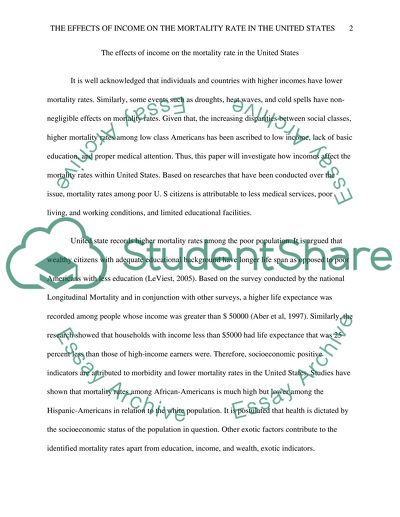Cite this document
(“The Effects of Income on the Mortality Rate in the United States Research Paper”, n.d.)
The Effects of Income on the Mortality Rate in the United States Research Paper. Retrieved from https://studentshare.org/health-sciences-medicine/1438524-the-effects-of-income-on-the-mortality-rate-in-the
The Effects of Income on the Mortality Rate in the United States Research Paper. Retrieved from https://studentshare.org/health-sciences-medicine/1438524-the-effects-of-income-on-the-mortality-rate-in-the
(The Effects of Income on the Mortality Rate in the United States Research Paper)
The Effects of Income on the Mortality Rate in the United States Research Paper. https://studentshare.org/health-sciences-medicine/1438524-the-effects-of-income-on-the-mortality-rate-in-the.
The Effects of Income on the Mortality Rate in the United States Research Paper. https://studentshare.org/health-sciences-medicine/1438524-the-effects-of-income-on-the-mortality-rate-in-the.
“The Effects of Income on the Mortality Rate in the United States Research Paper”, n.d. https://studentshare.org/health-sciences-medicine/1438524-the-effects-of-income-on-the-mortality-rate-in-the.


